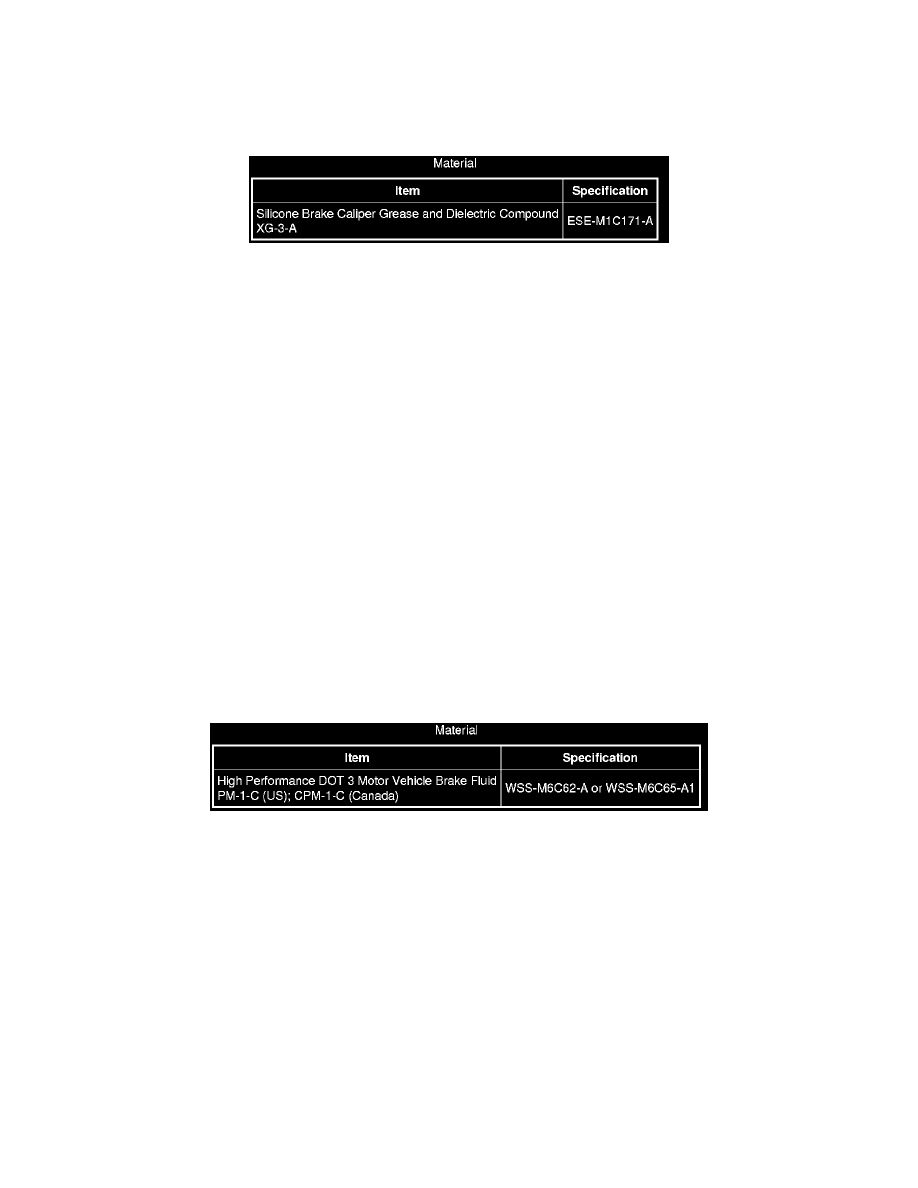Escape 4WD L4-2.5L Hybrid (2009)

Wheel Cylinder: Procedures
Wheel Cylinder Lubrication
Wheel Cylinder Lubrication
1. Remove the brake drum.
2. Remove the upper and lower return springs.
NOTICE: Use only specified silicone based lubricant. Use of other lubricants may cause damage to piston seals.
3. With the brake shoe return springs removed, push the leading shoe into the wheel cylinder until the shoe bottoms out.
4. Pull back the wheel cylinder dust boot (opposite depressed shoe) and apply specified lubricant around the wheel cylinder piston.
-
Reposition the wheel cylinder dust boot.
5. Push the trailing shoe into the wheel cylinder until the shoe bottoms out.
6. Pull back the wheel cylinder dust boot (opposite depressed shoe) and apply specified lubricant around the wheel cylinder piston.
-
Reposition the wheel cylinder dust boot.
7. Once both wheel cylinder pistons have been lubricated, push the pistons side-to-side at least 3 times to distribute the lubricant and verify smooth
movement.
8. Install the upper and lower return springs.
9. Install the brake drum.
-
Adjust the rear brake shoes.
Wheel Cylinder
Component Bleeding
Wheel Cylinder
WARNING: Do not use any fluid other than clean brake fluid meeting manufacturer's specification. Additionally, do not use brake fluid that
has been previously drained. Following these instructions will help prevent system contamination, brake component damage and the risk of
serious personal injury.
WARNING: Carefully read cautionary information on product label. For EMERGENCY MEDICAL INFORMATION seek medical advice.
For additional information, consult the product Material Safety Data Sheet (MSDS) if available. Failure to follow these instructions may result
in serious personal injury.
WARNING: Do not allow the brake master cylinder to run dry during the bleeding operation. Master cylinder may be damaged if operated
without fluid, resulting in degraded braking performance. Failure to follow this instruction may result in serious personal injury.
NOTICE: Do not spill brake fluid on painted or plastic surfaces or damage to the surface may occur. If brake fluid is spilled onto a painted or
plastic surface, immediately wash the surface with water.
NOTE: It is not necessary to do a complete brake system bleed if only the wheel cylinder was disconnected or installed new.
1. Remove the bleeder screw cap and place a box-end wrench on the bleeder screw. Attach a rubber drain hose to the bleeder screw and submerge the
